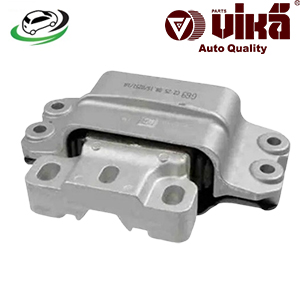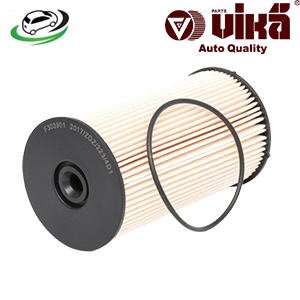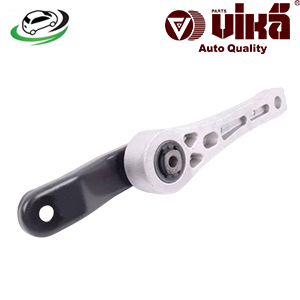-13%
Get Rear Engine Mount Audi A3/VW Touran/Golf V/VI/Jetta V Eos 1K0199855BD
Engine mounts are essential components of a vehicle’s drivetrain system, designed to secure the engine to the vehicle’s chassis or subframe. They play a critical role in minimizing engine vibrations, ensuring proper alignment, and maintaining overall vehicle stability. This comprehensive guide covers the purpose, types, benefits, maintenance, and common issues associated with engine mounts.
Purpose of Engine Mounts
Securing the Engine
The primary function of engine mounts is to secure the engine to the vehicle’s frame or subframe. They hold the engine in place, preventing excessive movement or shifting, which can lead to misalignment and drivetrain issues.
Vibration Reduction
Engine mounts are designed to absorb and isolate vibrations generated by the engine. This vibration isolation improves ride comfort for passengers and reduces noise transmitted to the cabin.
Alignment Maintenance
Proper engine mounting ensures that the engine is correctly aligned with other drivetrain components, such as the transmission and driveshaft. Correct alignment is crucial for efficient power transfer and reducing wear on drivetrain components.
Load Distribution
Engine mounts help distribute the weight and forces generated by the engine evenly across the vehicle’s chassis. This load distribution prevents stress on mounting points and associated components, contributing to vehicle durability and performance.
Types of Engine Mounts
- Rubber Engine Mounts
- Construction: Made from rubber and metal, these mounts are designed to absorb vibrations and provide cushioning between the engine and the chassis.
- Advantages: Effective at reducing engine vibrations and providing a smoother ride.
- Disadvantages: Rubber can deteriorate over time due to exposure to heat, oil, and wear, leading to mount failure.
- Hydraulic Engine Mounts
- Construction: Hydraulic mounts use a fluid-filled chamber to absorb and dampen vibrations. They often include a rubber or polyurethane outer layer.
- Advantages: Superior vibration isolation and damping compared to traditional rubber mounts, providing a quieter and more comfortable ride.
- Disadvantages: More complex and potentially more expensive to replace if they develop leaks or fail.
- Polyurethane Engine Mounts
- Construction: Made from polyurethane, these mounts offer increased durability and rigidity compared to rubber mounts.
- Advantages: Enhanced performance and resistance to wear, providing better handling and stability.
- Disadvantages: Can transmit more vibrations to the cabin due to their rigidity, leading to a firmer ride.
- Metal Engine Mounts
- Construction: Made entirely of metal, these mounts are used in performance or racing applications where durability and strength are prioritized over vibration isolation.
- Advantages: High durability and resistance to extreme conditions, suitable for high-performance vehicles.
- Disadvantages: Limited vibration damping and increased cabin noise, which can affect ride comfort.
Benefits of Proper Engine Mounting
Smooth Operation
Properly mounted engines ensure smooth and reliable operation of the vehicle. Correct mounting reduces the risk of engine misalignment, which can lead to driveline vibrations, gear slippage, and shifting issues.
Improved Ride Comfort
Engine mounts that effectively absorb and isolate vibrations contribute to a more comfortable driving experience. By minimizing noise and vibration transfer to the cabin, engine mounts enhance overall ride quality.
Enhanced Vehicle Stability
Proper engine mounting maintains correct alignment between the engine, transmission, and driveshaft. This alignment enhances vehicle stability, handling, and performance, reducing the risk of drivetrain issues.
Longevity of Drivetrain Components
Effective engine mounting reduces stress on drivetrain components, such as the transmission and driveshaft. This reduction in stress helps extend the lifespan of these components and prevents premature wear.
Load Distribution
Engine mounts distribute the weight and forces generated by the engine evenly across the vehicle’s chassis. This load distribution prevents excessive stress on mounting points and related components, contributing to vehicle durability.
Maintenance of Engine Mounts
Regular Inspection
- Visual Checks: Periodically inspect engine mounts for signs of damage, wear, or deterioration. Look for cracked or split rubber, fluid leaks in hydraulic mounts, or excessive movement of the engine.
- Listen for Noises: Pay attention to any unusual noises, such as clunking or banging, which may indicate problems with the engine mounts.
Replacement Intervals
- Manufacturer’s Recommendations: Follow the manufacturer’s guidelines for engine mount replacement intervals, as specified in the vehicle’s owner’s manual.
- Signs of Wear: Replace engine mounts if you notice signs of excessive wear, such as severe vibrations, difficulty starting, or noticeable movement of the engine.
Addressing Issues Promptly
- Fix Leaks: If hydraulic engine mounts are leaking fluid, replace them promptly to avoid further damage and ensure proper vibration isolation.
- Tighten Mounts: Check and tighten any loose engine mounting bolts or hardware to maintain proper alignment and secure the engine.
Common Issues with Engine Mounts
Worn or Broken Mounts
- Symptoms: Excessive vibration, clunking noises during acceleration or braking, and noticeable movement of the engine.
- Causes: Rubber or polyurethane mounts can wear out over time due to exposure to heat, oil, and constant stress. Hydraulic mounts may develop leaks.
Misalignment
- Symptoms: Poor shifting performance, driveline vibrations, and handling issues.
- Causes: Incorrectly installed or damaged mounts can lead to misalignment between the engine, transmission, and driveshaft.
Excessive Vibration
- Symptoms: Increased cabin noise and vibrations, rough idling, and discomfort during driving.
- Causes: Rigid or worn-out mounts may transmit more vibrations to the cabin, impacting ride comfort and stability.
Fluid Leaks (Hydraulic Mounts)
- Symptoms: Puddles of fluid under the vehicle, reduced vibration isolation, and potential mount failure.
- Causes: Hydraulic mounts may develop leaks due to seal failure or damage, reducing their effectiveness and potentially leading to engine issues.
Follow us on Facebook for more parts.



